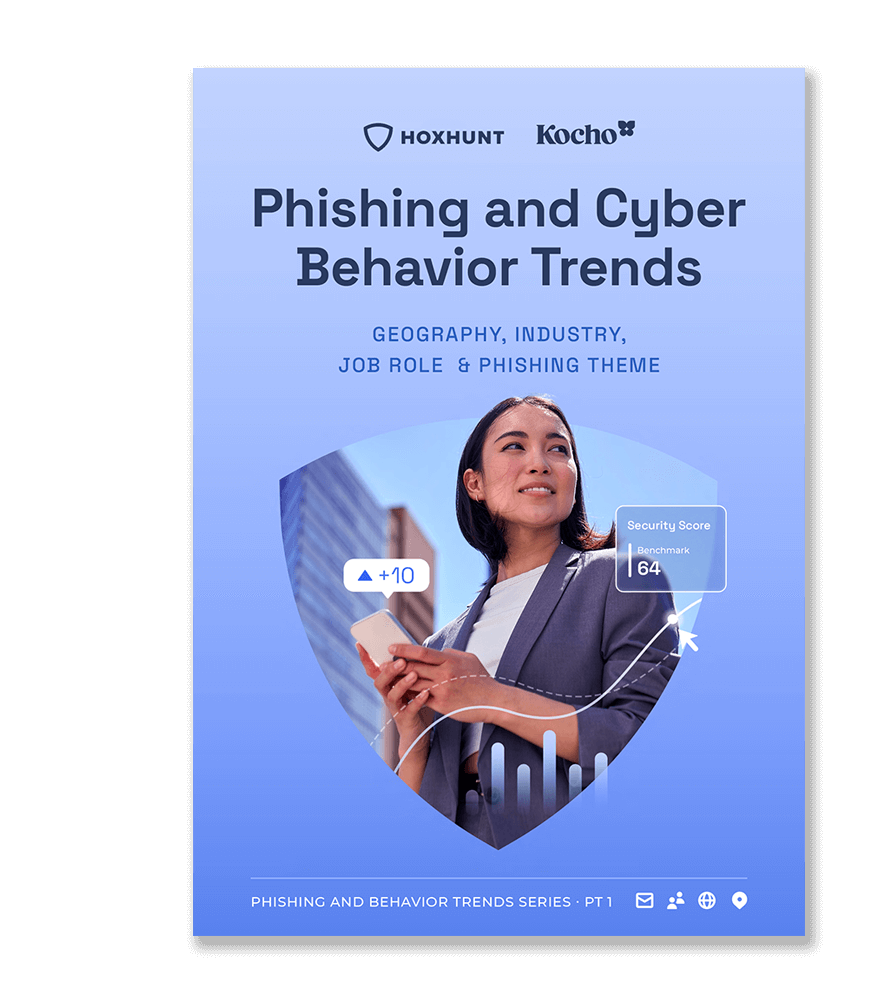
Blog | 4-minute Read
5 simple ways you can help your users spot a phishing attack

Mathew Richards
Head of Secure Digital Transformation
Published: 05 September 2018
It’s long been touted that humans are the weak link in an organisation’s cyber defences.
There’s a reason phishing attacks are on the rise – it’s the easiest way for hackers to gain access to your systems, so they can do things like install ransomware or steal information.
All it takes is for one of your employers to download an attachment or click a link they shouldn’t have and your beautifully constructed cyber security solution will come crashing down.
But don’t just wait for a user to get tricked so you can blame them and help make the multitude of reports I’ve found online even scarier!
Make it easy for users
There are some simple things you can do to help educate your employees and give them the best chance of recognising an email with malicious intent…


Free Report
Phishing and Cyber Behaviour Trends
Who’s clicking on what? Why? And are your employees reporting threats?
Download Hoxhunt’s Phishing report and find out:
- Phishing threats that pose the highest risk
- Average time to identify and contain a breach
- Highly targeted and highly susceptible industries
1. Use a visual cue
At Kocho, we include a visual cue on all incoming emails.
This acts as a reminder to our employees to check the message has come from someone they know – especially before following any instructions or opening any attachments.
I do recommend you maintain an exceptions list – i.e. leave the visual cue off known customer and supplier domains. This gives the warnings more impact. When emails do arrive with the banner applied, it prompts users to question the content.
If it’s automatically applied to everything, they’ll start to ignore it. We’ve added client domains to an exceptions list in Exchange Online to remove the warning banner from those we trust.
I’ve also excluded it from being applied to internal mail, which helps me spot if anyone is trying to impersonate one of our users.
2. Quiz your users
One of the simplest ways to educate your users is to craft a phishing message, take a screen shot and share it with them. Explain it’s an example of a phishing attack, but ask them to tell you how they would have known.
This will get them thinking – and as gaps in their knowledge appear, it will give you an opportunity to show them how to check a URL is safe or identity a fake domain name, etc.
3. Run your own campaigns
On the subject of fake domains – consider buying a domain name that looks similar to your own or take advantage of Microsoft Office 365 Phishing Attack Simulator.
According to Microsoft, 75% of all company breaches now start with a phishing attempt. So, whilst it might not sound like the nicest idea to ‘trick’ your employees, there’s a real business case to be made for running a simulated phishing email campaign internally.
With Office 365 Attack Simulator, your job is made easier as it comes with several phishing templates. But, however you choose to run your campaign, make sure it’s not just a one off – send a few emails, over a series of weeks, and vary the phishing technique with each.
This will help you highlight where people are most susceptible – and who is most susceptible for that matter – so you can focus your education and guidance investments.
4. Make it a part of your testing plans
You’re doing annual penetration testing, right?
And you’re doing it correctly?
Including a phishing exercise as part of your annual penetration testing is a must.
There’s nothing like a real-world test to see who’s vulnerable to phishing and test the technology you have in place.
A good penetration tester will have lots of sneaky ways to try and catch your users out. You can use that data to improve your training and look at any gaps in your technological implementation.
5. Take advantage of Microsoft
Whether it’s visual cues or simulating phishing emails – all my previous tips are enabled or made much easier with Microsoft Office 365.
We talk to so many companies who are paying for licenses but aren’t enabling all the features that are available to them.
Don’t waste resources or take unnecessary risks – configure Exchange Online Protection effectively and switch on features like ATP anti-phishing protection today.
Conclusion
Human vigilance plays a pivotal role in an organisation’s cybersecurity defence. The perennial threat of Phishing attacks seeks to exploit this vulnerability.
Organisations can strengthen their defences against phishing threats in a few ways, such as:
- Proactively implementing visual cues.
- Conducting educational exercises.
- Running simulated campaigns.
- Integrating phishing tests into penetration testing.
Additionally, by leveraging tools like Microsoft Office 365, organisations can further reduce their susceptibility to phishing attacks. Fortifying their cybersecurity posture in today’s dynamic digital environment.
Key takeaways
Implement visual cues on incoming emails to prompt users to verify the sender’s authenticity and avoid blindly following instructions or opening attachments.
Educate employees by crafting and sharing phishing examples, encouraging them to identify potential threats and knowledge gaps.
Run simulated phishing campaigns internally to assess susceptibility, using tools like Microsoft Office 365 Phishing Attack Simulator.
Incorporate phishing exercises into annual penetration testing to identify vulnerabilities and improve both training and technology.
Maximise Microsoft Office 365 features, such as ATP anti-phishing protection, to bolster email security without wasting resources.


Free Report
Phishing and Cyber Behaviour Trends
Who’s clicking on what? Why? And are your employees reporting threats?
Download Hoxhunt’s Phishing report and find out:
- Phishing threats that pose the highest risk
- Average time to identify and contain a breach
- Highly targeted and highly susceptible industries

Great emails start here
Sign up for free resources and exclusive invites
Subscribe to the Kocho mailing list if you want:
- Demos of the latest Microsoft tech
- Invites to exclusive events and webinars
- Resources that make your job easier

Don't Miss
Great security & compliance resources

Microsoft Security Roadshow
Demos and expert insight to help you get the most from Microsoft's identity, security and cloud solutions.

Purview Demo: Securing data in the age of AI

Legal Breakfast Briefing: Managing data security and compliance

Cybersecurity a year in review: What happened in 2025, and what it means for your 2026 security strategy
























Got a question? Need more information?
Our expert team is here to help.


